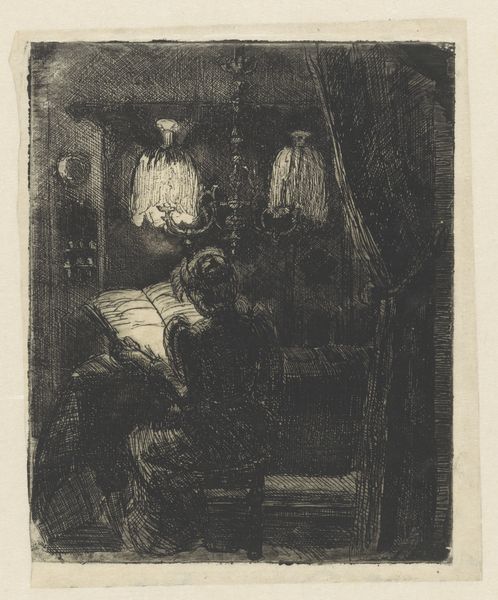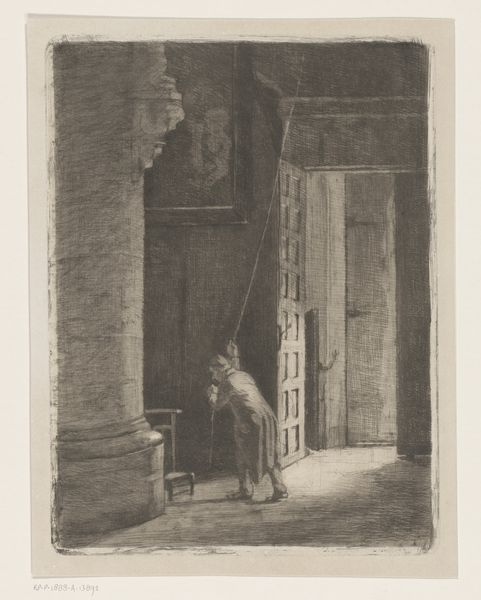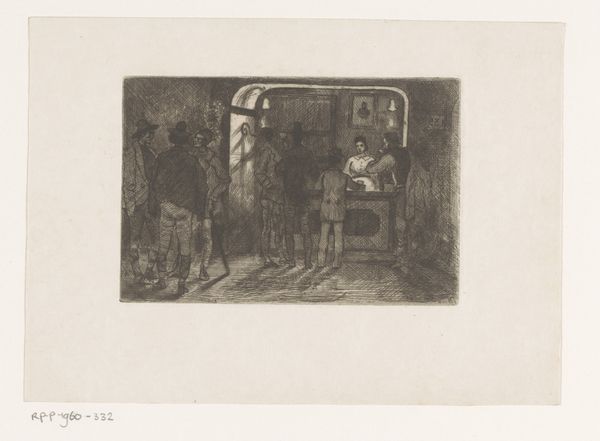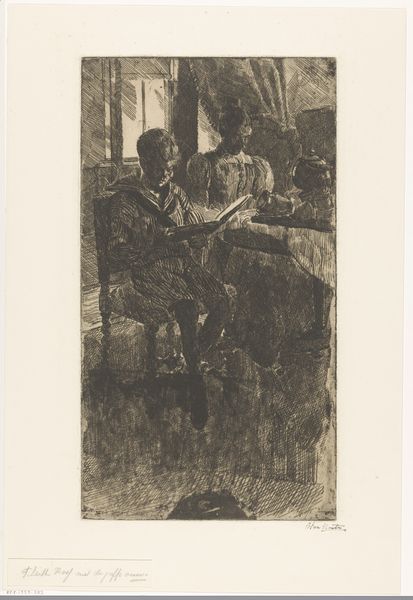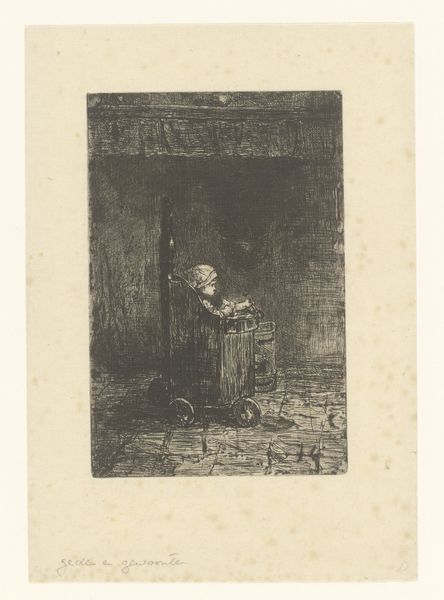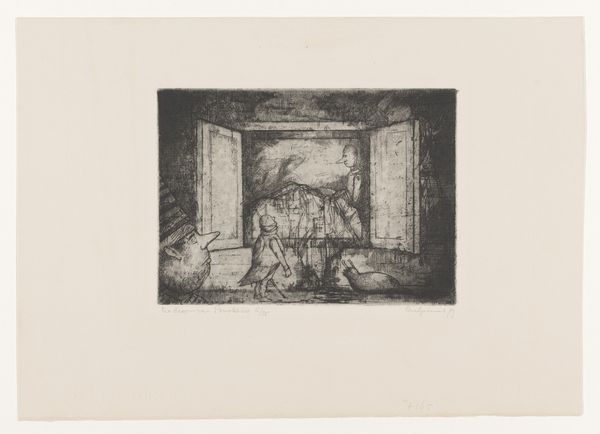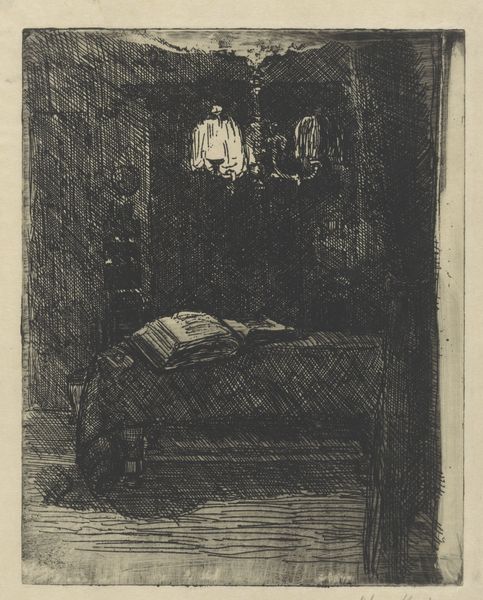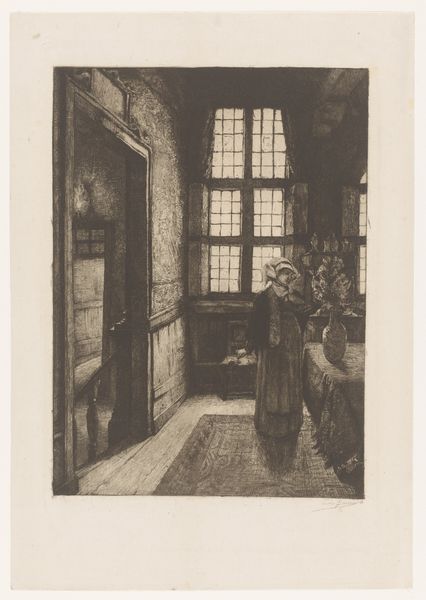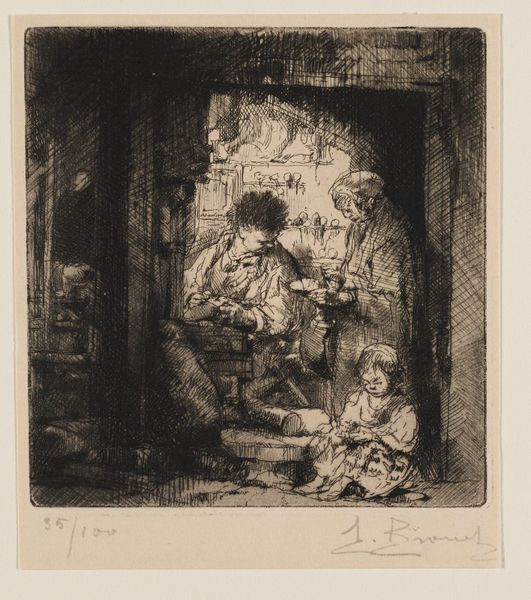
print, etching, engraving
#
portrait
#
toned paper
# print
#
etching
#
etching
#
genre-painting
#
history-painting
#
engraving
Dimensions: 175 mm (height) x 110 mm (width) (plademaal)
Editor: Here we have H.J. Hammer’s “Modelfamilien i Via Purificazione, Rom” from 1860, an etching on toned paper. The heavy blacks and stark contrast make for an almost claustrophobic mood, and you can almost feel the grit of the city in this piece. What strikes you most about this work? Curator: For me, it's the materiality itself. Consider the labour involved in etching. Each line, each shade is a deliberate act, physically inscribed onto the copper plate. How does that manual process shape our understanding of the family depicted, particularly in the context of Rome’s shifting social fabric in 1860? Were these materials readily available, and how does access shape the images we create? Editor: That’s an interesting point! It almost feels like the deliberate process lends a certain weight and respect to a subject matter that could have been considered common or everyday. Curator: Precisely! Etching, engraving – these weren't merely reproductive technologies but means of elevating certain subjects and perspectives. Also, note how Hammer’s choice to render such stark class differences can be linked to the rise of social consciousness within the art world, fueled by the increased production of readily accessible artworks via printed media. Does this image challenge or reinforce the existing power structures? Editor: I suppose it subtly challenges it by depicting this family and their domesticity in a traditionally valued artistic format, almost giving the everyday scene an important narrative. Curator: It's also worth considering the economic dynamics at play. Was this etching intended for mass consumption, or was it geared toward a wealthier clientele? The mode of distribution, after all, heavily influences how an image impacts a society. Editor: That's true; it definitely complicates the meaning depending on who it reached! Thanks; I’ve never considered approaching a piece from that angle. Curator: Absolutely! By scrutinizing materials and methods of distribution, we understand art not just as aesthetics but as embedded cultural and economic processes.
Comments
No comments
Be the first to comment and join the conversation on the ultimate creative platform.
